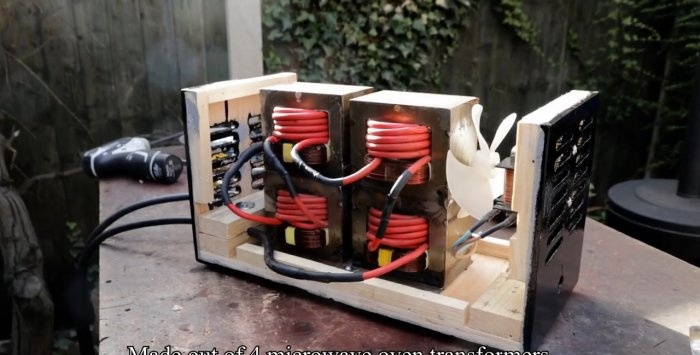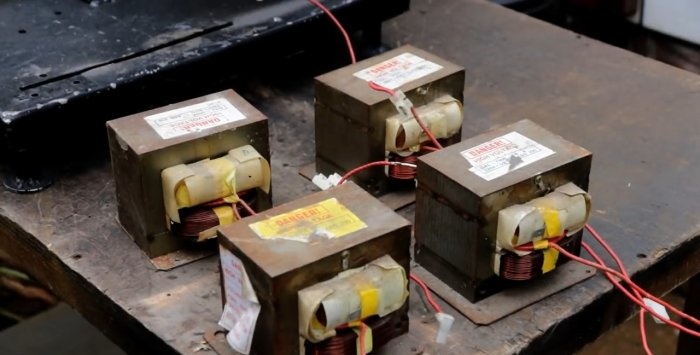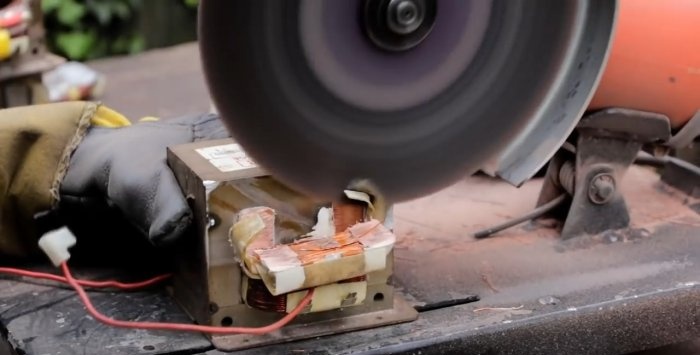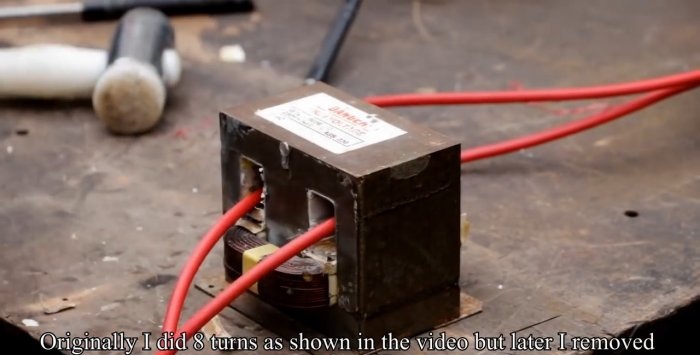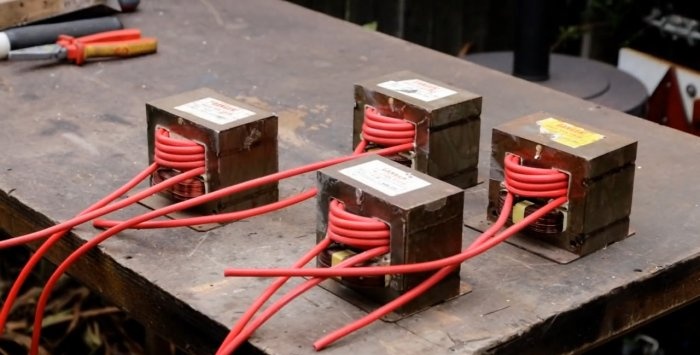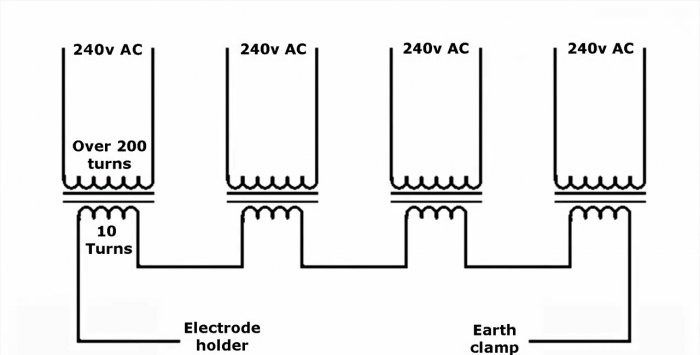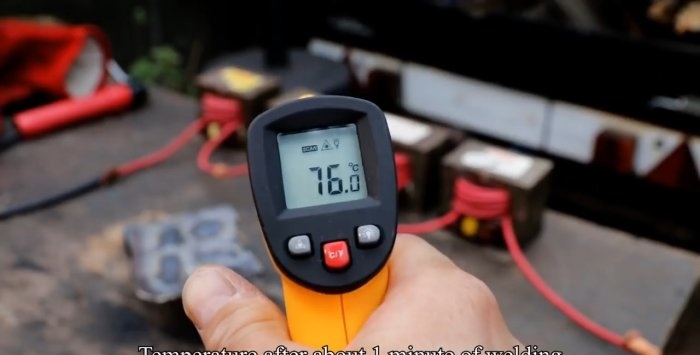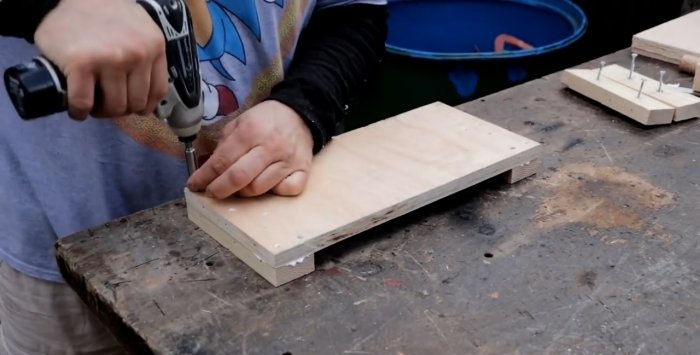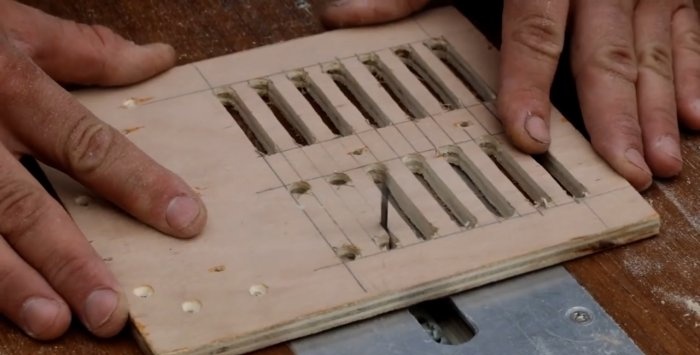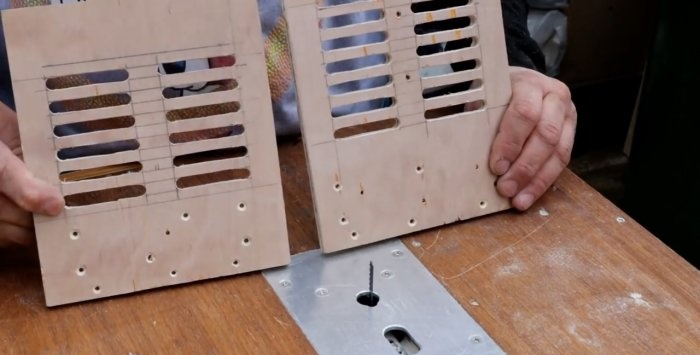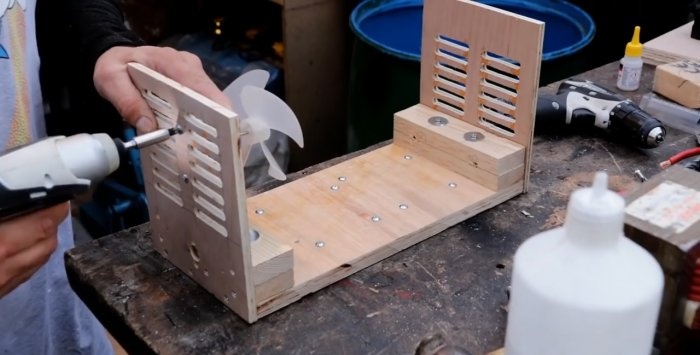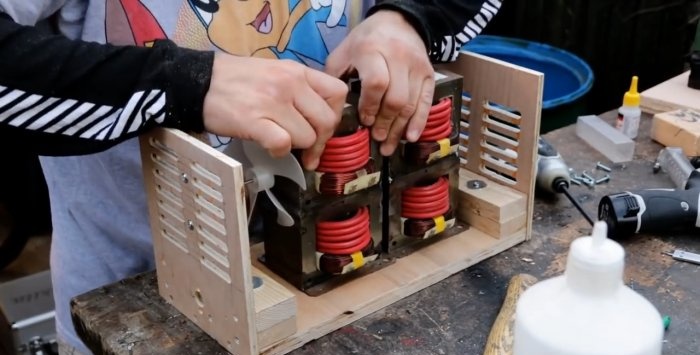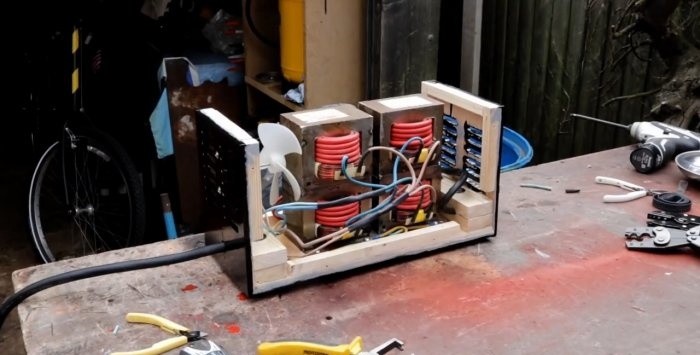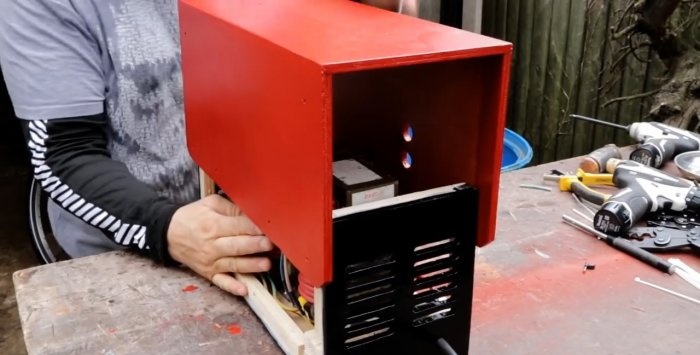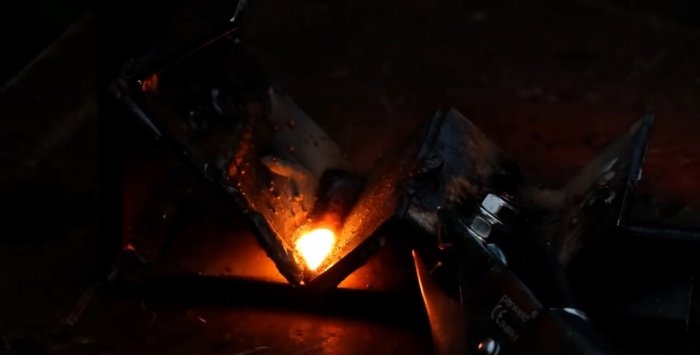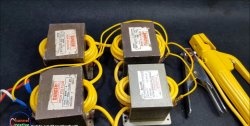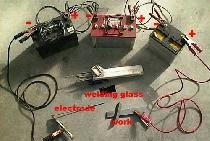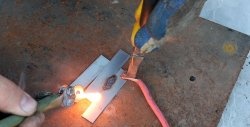It was necessary to make a welding unit for use in the garage and in the country. Simple yet powerful, with up to 200A output current to weld steel up to 12mm thick. electrodes “four” or “five”.
Necessary
- Four new or used power transformers from a microwave oven;
- Insulated stranded wire with a cross-section of at least 50 mm2;
- Sleeves for crimping wires and pressing pliers;
- Simple metalworking and carpentry tools;
- Multilayer plywood for the device body;
- Multimeter and a remote thermometer;
- Various small things, fasteners, paint, etc.
Manufacturing of electrical parts
The transformers themselves can be bought new or used, in microwave repair shops, at a decent discount.
We remove the second winding. You can use a cutting disc or a regular hacksaw for metal. The main thing is not to damage the primary winding!
We knock out the remains of the cut “primary” with a beard or any suitable steel rod.
Then carefully lay 10 turns of cable into the free “window”.
We leave the conclusions at 15 cm.
We repeat the operation with the remaining transformers.
Electrical check
It is necessary to check the electrics of the future welding machine.
ATTENTION!
All further electrical installation work must be carried out ONLY with the device de-energized!
We connect the windings using twists according to the diagram.
Network, former secondary, in “parallel”.
We assemble the output windings in series.
In this case, it is necessary that the outputs of one winding be connected to the input of the next!
We connect the network windings to a powerful 220 V outlet. We check the current consumed by the unit when there is no load.
About 11 A., a bit too much, but tolerable.
We measure the voltage at the output of the combined power welding windings. The resulting voltage was 35 - 37 V. Each transformer had 9 V.
Then we check the possibility of igniting the arc and try to weld a couple of steel parts.
Cooking! The seam turns out great.
During the welding process, the input current is 32 - 35 A, the arc current is 170 - 190 A.
We check the heating of the transformers, it does not exceed 80 0C. Acceptable.
Frame
Transformers are welded two at a time.
You can make the case out of metal, or you can choose something ready-made. It was easier for me to make it from multi-layer plywood.
The housing must have large ventilation openings.
We install a fan for forced ventilation of the transformers.
Final assembly of the device
We install all components and parts in the housing. We connect winding terminals, mains and output welding terminals, with metal sleeves of appropriate diameters. We compress the sleeves with press pliers.
We insulate the joints with heat-shrinkable tubes, heating them with a hairdryer.
Close the lid, the device is ready.
Checking work
We weld two 6 mm. steel plates. The arc is smooth, there are no current drops. The seam is obtained with deep penetration.
Through the hole in the housing we check the transformers for overheating. The temperature is a little over 40 0C.
We repeat welding with 12 mm. steel scraps. The result is again positive.
The “welder” turned out great!
However, it is worth remembering that the transformers in the device are relatively small. Therefore, the most important characteristic for a welding unit PV (on duration) or PN (load duration) is small here, 20 - 30%. Cook for 3 minutes, let the device rest for 7 - 8 minutes. At this time, you can change the electrode, rearrange the parts being welded, or just take a break.
To increase the performance of the device and reduce its heating, it makes sense to install a more powerful fan or install a second one. One will pump air, the other will pull air. Cooling efficiency will improve.
